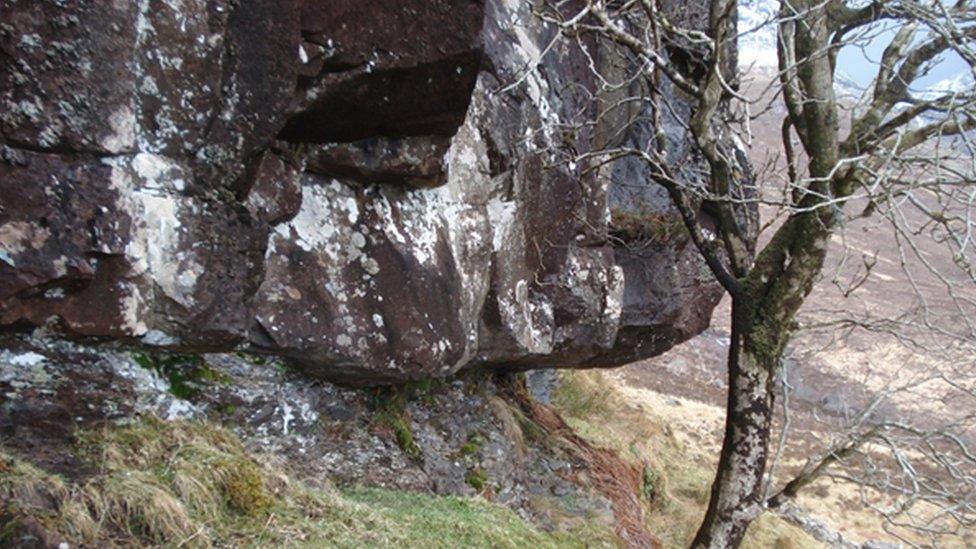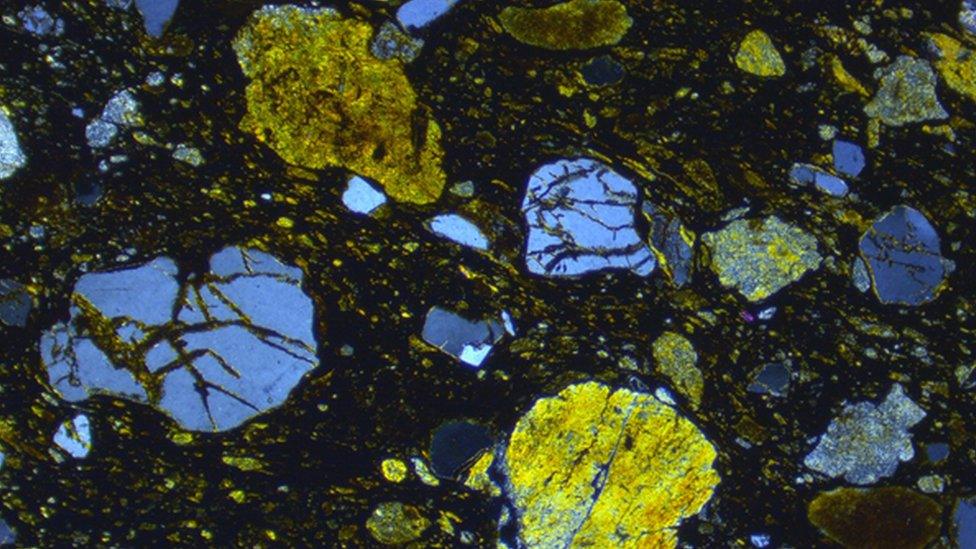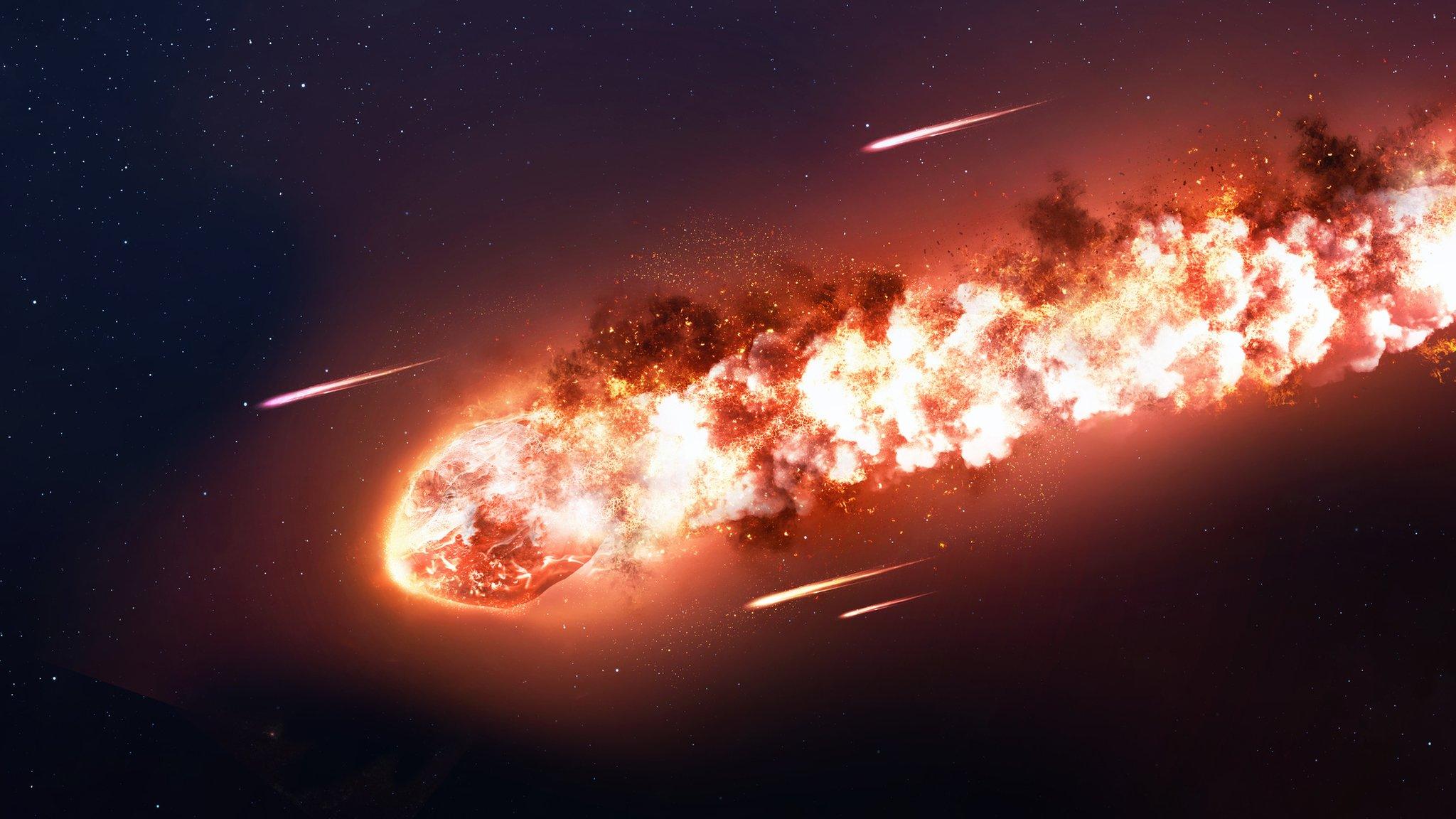60 million-year-old meteorite impact found on Skye
- Published

The size of the impact has still to be measured
Geologists have found evidence of a 60 million-year-old meteorite impact on the Isle of Skye.
They made the discovery while exploring volcanic rocks on the island, including at a site just south of Broadford.
Meteoritic minerals found below layers of lavas, dated to volcanic activity as much as 61.54 million years ago, have not previously been found on Earth.
However, the minerals were collected as particles in the wake of comet Wild-2 by Nasa's Stardust mission in 2006.
Dr Simon Drake, from Birkbeck, University of London, made the finds on Skye with colleague Dr Andy Beard. He believes the impact may have played a part in Skye's volcanological evolution.
He told BBC Radio Scotland's Ken Macdonald that it had not yet been possible to measure the size of the impact site.
But Dr Drake said: "We have found evidence of the impact at two sites and at another potential two sites on the Isle of Skye, at the moment."

The geologists were exploring ancient volcanic rocks when they made their discovery
He added: "One of the things that is really interesting here is that the volcanological evolution of the Isle of Skye has always been considered to have been started with what's called a volcanic plume, an enormously large bulk of magma which has come up under what then was the crust that Skye was on.
"We are now suggesting that this may well have been assisted by a meteorite impact."
'Was worth it'
The Birkbeck geologists, who published their discovery in Geology this week, were looking for ancient volcanic rock when their attention was drawn to something unexpected.
They thought they were looking at an ignimbrite, a volcanic flow deposit.
However, later analysis of the rock using an electron microprobe revealed that it contained rare minerals straight from outer space - vanadium-rich and niobium-rich osbornite.

A thin section view of what is known as meteoritic ejecta deposit found on Skye
When the geologists first made their surprise find on their trip to Skye, they were having to wade through a peatbog.
Dr Drake said: "We were sinking in up to our thighs.
"I distinctly recall saying to Andy Beard, 'This had better be worth it'.
"It was worth it."
Last year, another team of scientists said they had identified a meteorite impact crater beneath a large area of mainland Scotland.
Dr Mike Simms, of Ulster Museum in Belfast, suggested the centre of the crater to be Lairg in Sutherland.
Evidence of the giant, ancient meteorite impact includes deposits of green molten rock fragments mixed in with red sandstone "sandwiched" between sandstones almost 1.2 billion years old.
- Published14 September 2016
